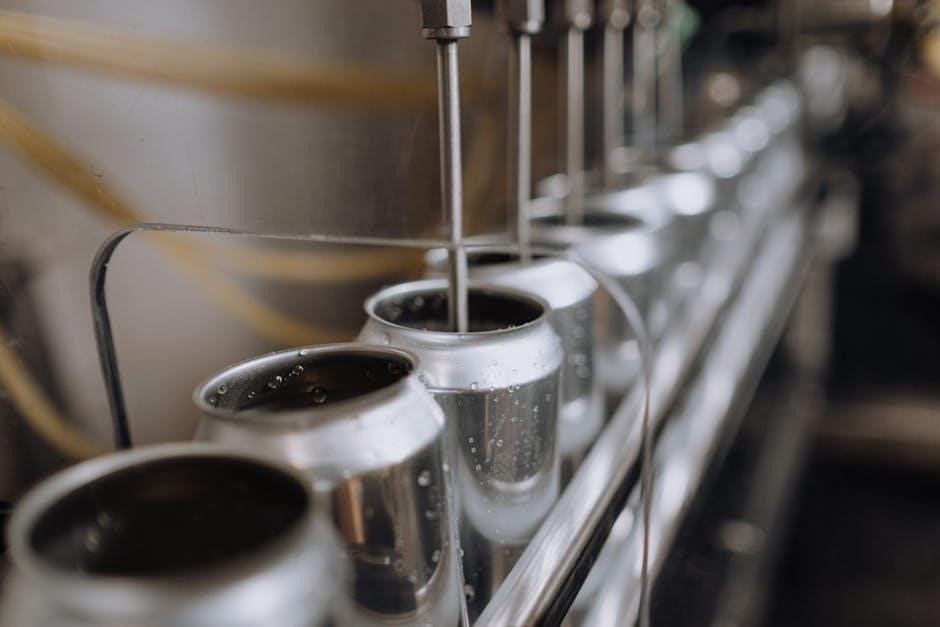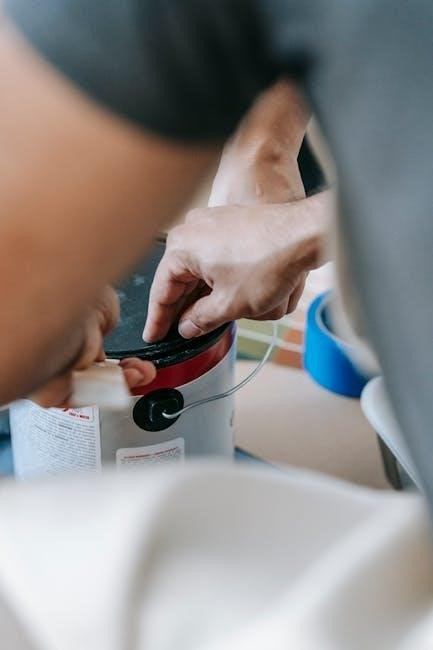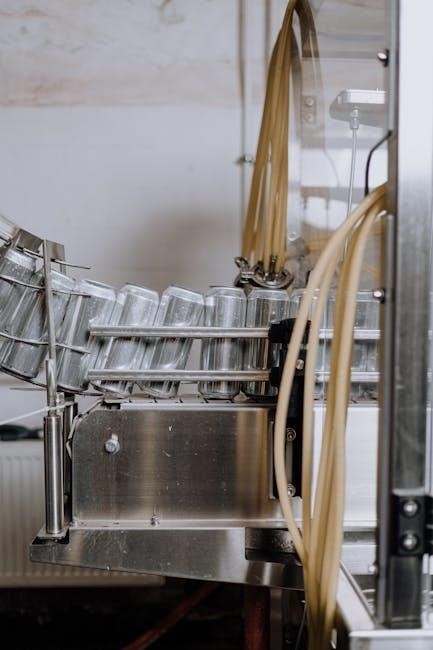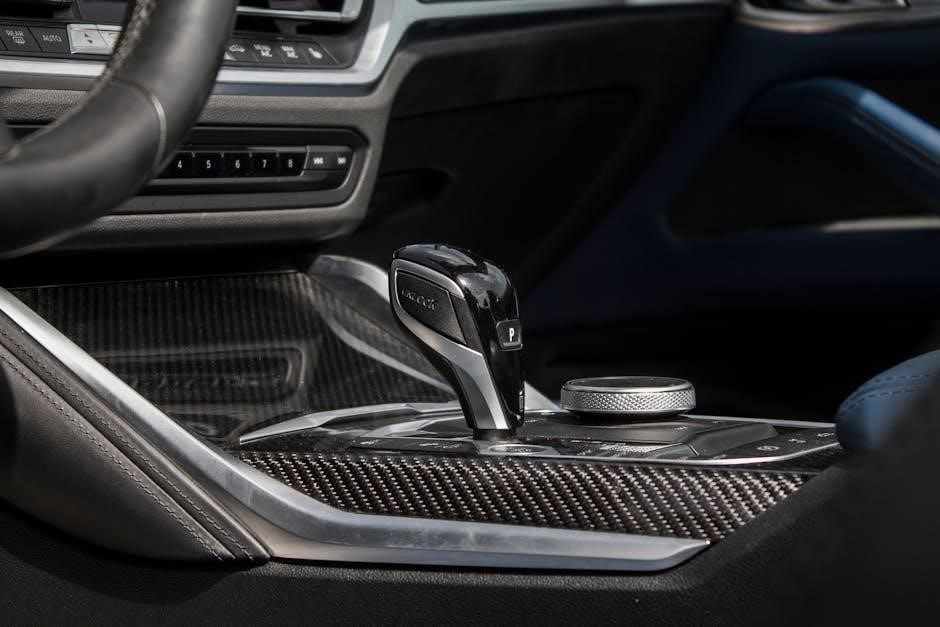Converting an automatic car to a manual transmission is a complex process involving significant mechanical changes. It requires careful planning, specialized tools, and a deep understanding of drivetrain systems.
Overview of Transmission Types
Automatic and manual transmissions are two distinct systems designed to transfer power from the engine to the wheels. Automatic transmissions rely on a torque converter and complex gear sets to shift gears automatically, requiring no driver input. They are more convenient but generally heavier and less fuel-efficient. Manual transmissions, on the other hand, use a clutch pedal and gearshift to allow the driver to control gear changes, offering better fuel efficiency and driver engagement. Both systems have unique components, with automatics utilizing a valve body and torque converter, while manuals rely on a clutch assembly and driver interaction. Understanding these fundamental differences is crucial when considering a transmission swap.
Reasons for Converting an Automatic to a Manual Transmission
Converting an automatic to a manual transmission offers several benefits, including improved fuel efficiency, lower repair costs, and enhanced driver control. Many enthusiasts prefer manual transmissions for a more engaging driving experience. Additionally, manual transmissions often provide better acceleration and performance, especially in sports or vintage cars. Some drivers opt for a manual swap to reduce long-term maintenance expenses, as manuals are generally simpler and more durable. For car enthusiasts, the satisfaction of shifting gears and connecting with the vehicle can be a significant motivator. While the process is complex, the potential improvements in performance and cost savings make it a worthwhile consideration for many drivers.

Feasibility of the Conversion
Converting an automatic to a manual transmission is feasible with compatible parts and expert mechanical skills, ensuring a smooth transition while addressing drivetrain modifications and potential wiring adjustments.
Can You Replace an Automatic Transmission with a Manual?
Replacing an automatic transmission with a manual is possible but requires significant mechanical expertise and specialized tools. The process involves swapping the automatic transmission for a manual one, installing a clutch assembly, and updating the shifter and pedal systems. Additionally, modifications to the drivetrain, mounting points, and potentially the ECU and wiring harness may be necessary to ensure compatibility. While achievable, this conversion is complex and not recommended for beginners. Professional assistance is often advised to ensure a smooth and functional transition. Proper planning and research are essential to avoid costly mistakes and ensure the car operates efficiently post-conversion.
Key Differences Between Automatic and Manual Transmissions
Automatic and manual transmissions differ fundamentally in design and operation. Automatic transmissions rely on a torque converter and complex hydraulic systems to shift gears automatically, eliminating the need for a clutch pedal. In contrast, manual transmissions require driver input through a clutch pedal and gearshift to change gears, offering more control over acceleration and performance. Automatics are easier to use in heavy traffic but generally weigh more and consume more fuel. Manuals are lighter, more fuel-efficient, and often preferred by driving enthusiasts. These differences make converting from one to the other a significant undertaking, requiring changes to multiple vehicle systems beyond just the transmission itself.

Key Components to Replace
The primary components to replace include the transmission and clutch assembly, as well as the shifter and pedal assembly. These are essential for manual operation.
Transmission and Clutch Assembly
Replacing the automatic transmission with a manual transmission requires installing a compatible manual transmission and a clutch assembly. The transmission must be selected based on the vehicle’s make, model, and engine specifications to ensure proper compatibility. The clutch system, including a clutch pedal, master cylinder, and slave cylinder, must also be installed to enable manual gear shifts. Additionally, the flywheel must be replaced to accommodate the clutch. This process is critical for enabling driver control over gear changes. Proper installation ensures smooth operation, but incorrect fitment can lead to drivetrain issues. Professional expertise is often recommended for this complex swap.
Shifter and Pedal Assembly
When replacing an automatic transmission with a manual transmission, the shifter and pedal assembly must be installed. The shifter is mounted inside the car and connected to the manual transmission via a linkage system. This allows the driver to manually select gears. The pedal assembly, which includes a clutch pedal, must also be added. The clutch pedal operates the clutch, enabling smooth gear transitions. Both components are essential for proper functionality. Compatibility with the vehicle’s make and model is crucial to ensure seamless integration. Proper installation of these components is vital for optimal performance and driver control.

Installation Process
The process involves removing the automatic transmission and installing the manual transmission. This includes mounting the transmission, securing it, and connecting the drivetrain components; The shifter and pedal assembly must also be installed for proper functionality.
Removing the Automatic Transmission
Removing the automatic transmission is a critical step in the conversion process. It involves disconnecting the transmission from the engine and drivetrain. The transmission is typically held in place by mounts and bolts, which must be carefully removed. Once disconnected, the transmission is lifted out of the vehicle, often requiring specialized tools or a hoist. Proper care must be taken to avoid damaging surrounding components, such as the engine, driveshaft, and wiring harnesses. This step sets the stage for installing the manual transmission and associated components, ensuring a smooth transition to the new drivetrain system. Precision and patience are essential during this phase.
Installing the Manual Transmission
Installing the manual transmission is a meticulous process that requires precision and mechanical expertise. Once the automatic transmission is removed, the manual transmission is carefully mounted to the engine and secured with bolts and gaskets. The drivetrain components, such as the driveshaft, must be reconnected to the transmission output shaft. Additionally, the clutch and flywheel are installed to facilitate smooth gear shifts. The shifter assembly is then mounted inside the car, ensuring proper linkage to the transmission. This step is challenging but rewarding, as it brings the car closer to completing the conversion. Proper alignment and adjustments are critical to ensure optimal performance and prevent future issues.
Technical Challenges and Modifications
Replacing an automatic transmission with a manual transmission requires significant technical adjustments. The drivetrain must be modified to ensure compatibility, often involving custom mounts and driveshaft alterations. Additionally, the ECU and wiring harness need reconfiguration to accommodate the manual system, which can be complex and labor-intensive. These modifications demand precision to maintain optimal vehicle performance and functionality.
Drivetrain and Mounting Considerations
When replacing an automatic transmission with a manual transmission, significant attention must be paid to the drivetrain and mounting systems. The driveshaft may need to be shortened or extended to accommodate the new manual transmission, as its length differs from the automatic unit. Additionally, the transmission mounts must be replaced or modified to fit the manual transmission, ensuring proper alignment and secure installation. The shifter and its linkage must also be correctly positioned, often requiring modifications to the car’s floorpan or tunnel. These adjustments are critical to ensure smooth operation and prevent mechanical failure. Proper engineering and precision are essential to maintain the integrity of the vehicle’s drivetrain system.
ECU and Wiring Harness Adjustments
Replacing an automatic transmission with a manual transmission often requires significant modifications to the vehicle’s ECU (Engine Control Unit) and wiring harness. The ECU must be reprogrammed or replaced to accommodate the manual transmission’s operation, as it relies on different sensors and inputs, such as the clutch pedal and gear position. Additionally, the wiring harness may need to be adapted to support the manual transmission’s components, such as the clutch master cylinder and shifter assembly. In some cases, custom wiring or additional sensors may be necessary to ensure proper communication between the engine and transmission; These adjustments are critical to maintaining proper vehicle functionality and performance after the swap.

Cost Implications
Replacing an automatic transmission with a manual transmission can range from $1,000 to $3,000, depending on the vehicle model, parts availability, and labor costs.
Estimated Costs for Parts and Labor
The cost of replacing an automatic transmission with a manual transmission varies widely, depending on the vehicle and components needed. A manual transmission typically costs between $500 to $2,000, while a clutch kit can add another $300 to $900. Labor costs range from $500 to $1,500, depending on the mechanic’s expertise and location. Additional expenses include a shifter assembly ($200 to $500), pedal assembly ($100 to $300), and potential modifications to the ECU or wiring harness. In total, the swap can cost between $1,500 to $4,500. Factors like custom fabrication or specialized tools may increase costs further. Always research parts availability and labor rates to estimate accurately for your specific vehicle.
Is the Swap Worth the Investment?
The decision to replace an automatic transmission with a manual one depends on personal preferences, driving habits, and long-term goals. For enthusiasts seeking better control and a more engaging driving experience, the swap can be rewarding. Manual transmissions often improve fuel efficiency and reduce maintenance costs over time. However, the upfront investment in parts and labor can be significant, ranging from $1,500 to $4,500 or more. Additionally, modern automatic transmissions have closed the gap in performance and efficiency, making the swap less practical for some. Ultimately, the value lies in the driving experience and potential resale value for niche or performance vehicles. Weighing these factors is crucial to determining if the swap aligns with your priorities and budget.

